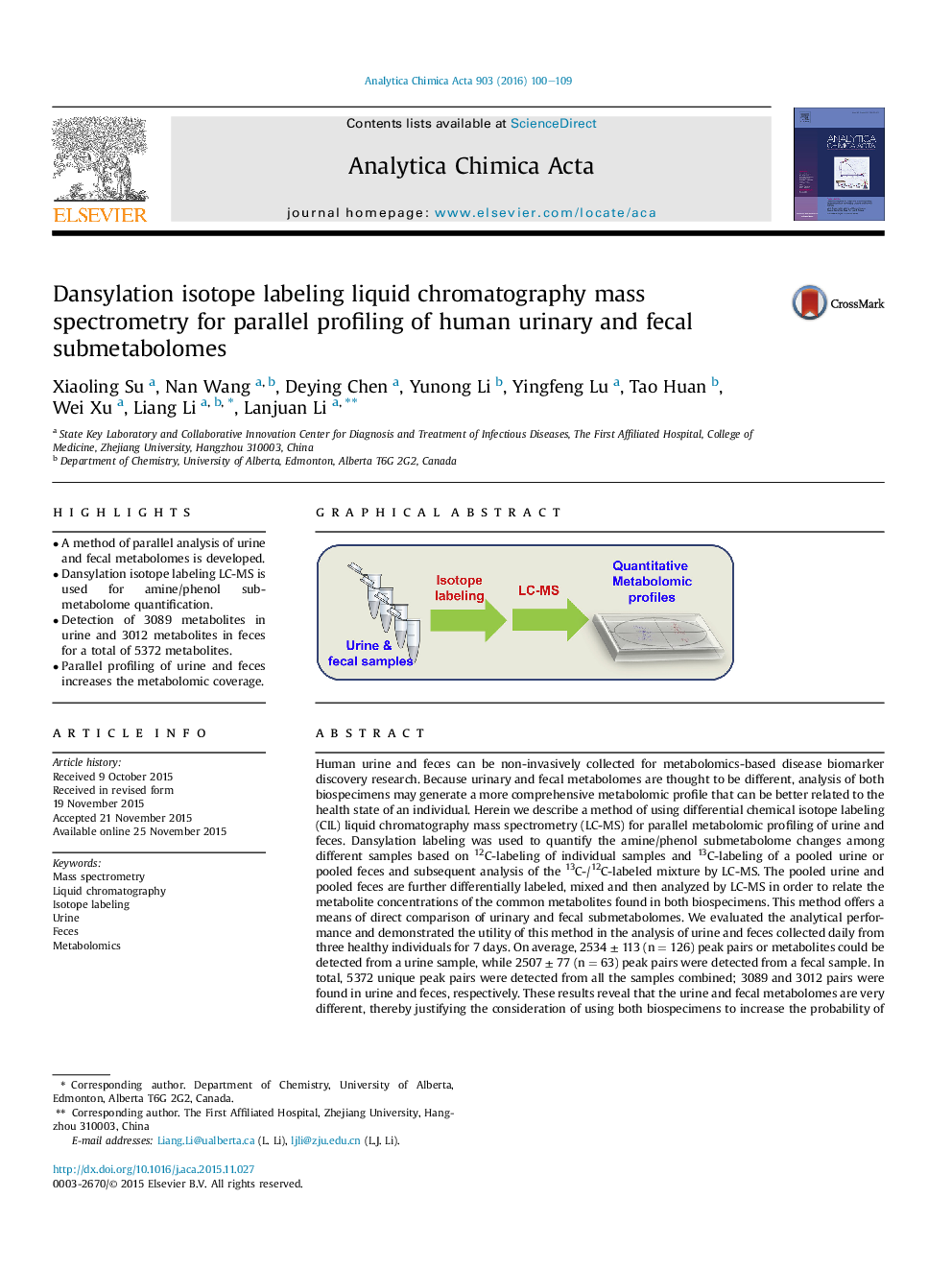| کد مقاله | کد نشریه | سال انتشار | مقاله انگلیسی | نسخه تمام متن |
|---|---|---|---|---|
| 1163117 | 1490929 | 2016 | 10 صفحه PDF | دانلود رایگان |
• A method of parallel analysis of urine and fecal metabolomes is developed.
• Dansylation isotope labeling LC-MS is used for amine/phenol submetabolome quantification.
• Detection of 3089 metabolites in urine and 3012 metabolites in feces for a total of 5372 metabolites.
• Parallel profiling of urine and feces increases the metabolomic coverage.
Human urine and feces can be non-invasively collected for metabolomics-based disease biomarker discovery research. Because urinary and fecal metabolomes are thought to be different, analysis of both biospecimens may generate a more comprehensive metabolomic profile that can be better related to the health state of an individual. Herein we describe a method of using differential chemical isotope labeling (CIL) liquid chromatography mass spectrometry (LC-MS) for parallel metabolomic profiling of urine and feces. Dansylation labeling was used to quantify the amine/phenol submetabolome changes among different samples based on 12C-labeling of individual samples and 13C-labeling of a pooled urine or pooled feces and subsequent analysis of the 13C-/12C-labeled mixture by LC-MS. The pooled urine and pooled feces are further differentially labeled, mixed and then analyzed by LC-MS in order to relate the metabolite concentrations of the common metabolites found in both biospecimens. This method offers a means of direct comparison of urinary and fecal submetabolomes. We evaluated the analytical performance and demonstrated the utility of this method in the analysis of urine and feces collected daily from three healthy individuals for 7 days. On average, 2534 ± 113 (n = 126) peak pairs or metabolites could be detected from a urine sample, while 2507 ± 77 (n = 63) peak pairs were detected from a fecal sample. In total, 5372 unique peak pairs were detected from all the samples combined; 3089 and 3012 pairs were found in urine and feces, respectively. These results reveal that the urine and fecal metabolomes are very different, thereby justifying the consideration of using both biospecimens to increase the probability of finding specific biomarkers of diseases. Furthermore, the CIL LC-MS method described can be used to perform parallel quantitative analysis of urine and feces, resulting in more complete coverage of the human metabolome.
Figure optionsDownload as PowerPoint slide
Journal: Analytica Chimica Acta - Volume 903, 15 January 2016, Pages 100–109
